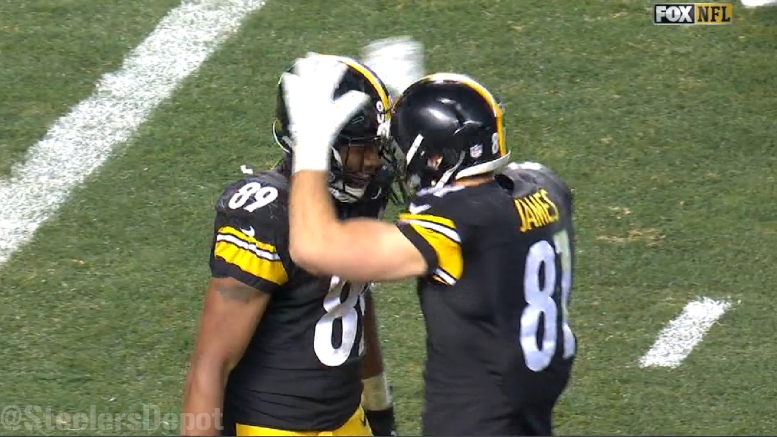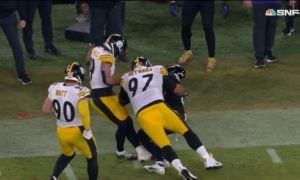In the Pittsburgh Steelers’ Thanksgiving Day game against the Colts, second-year tight end Jesse James was held without a reception for the first time this entire season. That actually did not have to be the case, as he was targeted late in the game by Landry Jones, but he dropped what would have been a long reception, albeit a meaningless one given the game circumstances.
One game after not targeting him a single time—granted, in a game in which he attempted just 20 passes—Ben Roethlisberger quickly came back to the player who had been filling in as his top tight end all season—and he dropped that pass.
But Roethlisberger came right back to him on the very next opportunity, and that may not have been the easiest thing in the world to do, because the pass that James dropped was on third down, as was the pass that Jones threw to him, meaning that he dropped two consecutive targets on third down.
The long-range point I’m trying to make here, though, is in a game in which new top tight end target Ladarius Green caught six passes for 110 yard and a touchdown, James still managed to contribute three receptions on the day for 32 yards. And if the offense can get that kind of production on a semi-regular basis from their number two tight end, then they can be in pretty decent shape.
On the season, James has currently caught 32 passes for 268 yards and three touchdowns, but his productivity has taken a dip since Green has returned. Over a two-game span on the road against the Browns and Colts, he caught just one pass for five yards.
But he did, as mentioned, have three catches for 32 yards on Sunday, and he caught four passes for 59 yards against the Cowboys in Green’s first game back, during which he played only a very limited number of snaps. Those 59 yards included a reception of 24 yards, which was his first explosive play of the season, and the longest by eight yards.
One of the issues that has actually plagued James while trying to work as the team’s number one target from the tight end position was an inability to pick up yards after the catch, which also stemmed in part from his lack of separation that he was able to gain against his coverage, which is why, even now, after notable improvements in terms of yards per reception, he is averaging 8.4 yards per catch, which is a marked improvement of more than a yard.
It is my hope, and cautious expectation, that Green’s installation into the lineup, and the Steelers’ seeming interest to use more formations with multiple tight ends, will finally see James work as the player he is most capable of being, which is the number two target and blocker. He offers more as a receiver than Matt Spaeth did in that same role, though not quite as much as a blocker.








